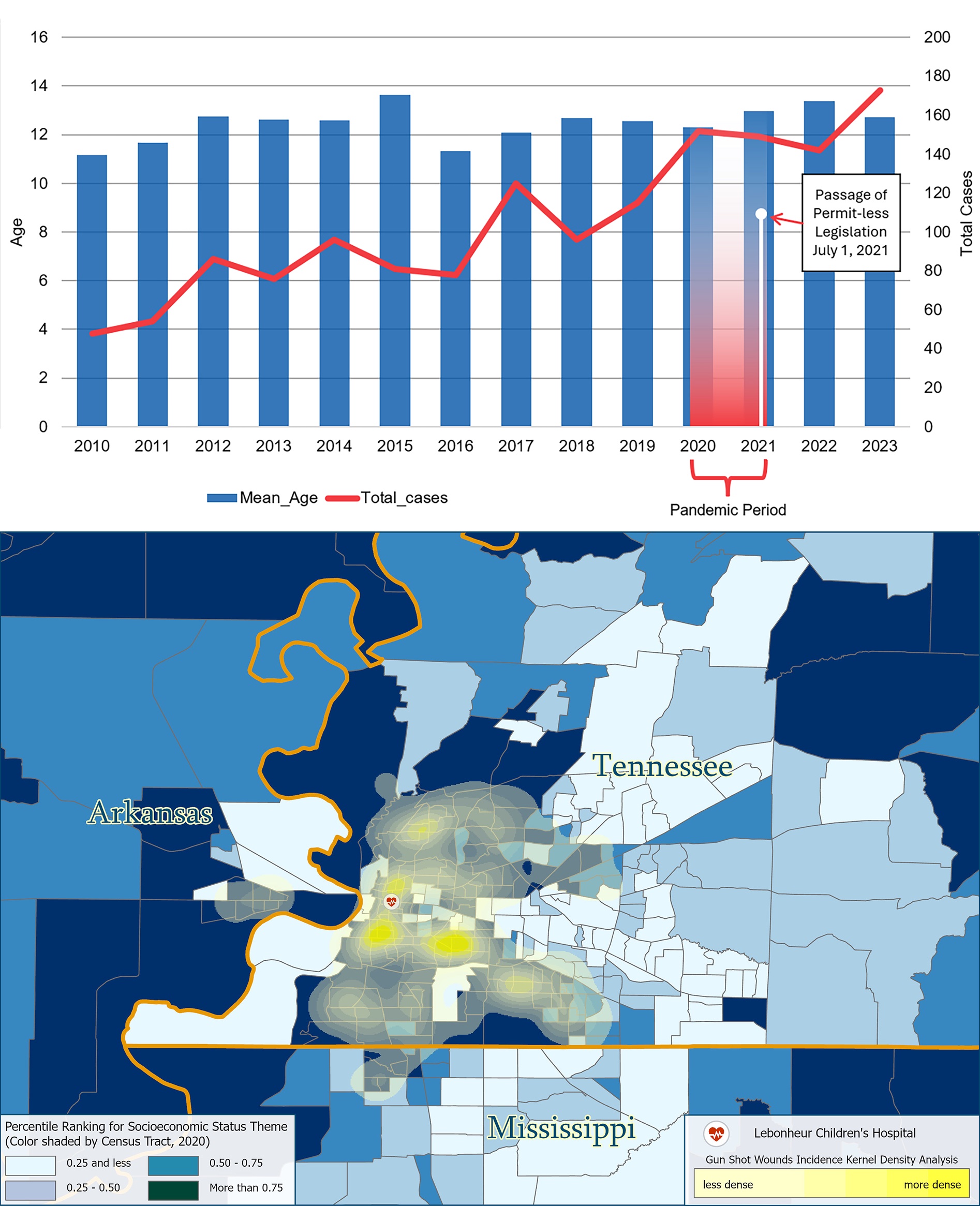Emergency Medicine 11
Session: Emergency Medicine 11
527 - Demographic and Social Factors Associated with Pediatric Firearm Injuries: A Retrospective Review
Monday, April 28, 2025
7:00am - 9:15am HST
Publication Number: 527.4129
Mark Snider, Le Bonheur Children's Hospital, Memphis, TN, United States; Erika L. Cohen, St. Joseph's Children's Hospital of Tampa, Saint Petersburg, FL, United States; Tharani Ramesh Chithra, Le Bonheur Children's Hospital, Franklin, TN, United States; Rumana Siddique, Children Foundation Reasearch Institute, Memphis, TN, United States; Regan Williams, University of Tennessee Health Science Center College of Medicine, Memphis, TN, United States

Erika L. Cohen, MD (she/her/hers)
Pediatric Emergency Medicine Physician
St. Joseph's Children's Hospital of Tampa
Saint Petersburg, Florida, United States
Presenting Author(s)
Background: Firearm-related injuries and fatalities among children in the United States have reached alarming levels, exhibiting a significantly higher incidence compared to other developed nations. Memphis, TN is consistently ranked as one of the most violent cities in America to live in. While many cities and states saw a decrease in gun violence over the past year, Memphis experienced a population adjusted increase in gun violence, with the highest incidence of violent crime per capita.
Objective: To identify demographic, social, and legislative risk factors that may contribute to increased incidence of ballistic injuries among children.
Design/Methods: A retrospective cohort study of pediatric firearm related injuries presenting to Le Bonheur Children’s Hospital (LBCH) from January 1, 2010 through December 31, 2023. Variables included age, gender, race, mortality, school zoning type (in-person, virtual, hybrid), Social Vulnerability Index (SVI) (based on geographic location of residence), and first firearm injury (in the event patients experienced more than one). Statistical analyses was performed using T-test, chi-square test, univariate and multivariate Poisson regression, and backward elimination.
Results: 1,512 charts from 2010–2023 were found, featuring 1,471 individual subjects; 79.13% were males, 78.11% were Black, and 56.8% were 14–18 years old. The highest annual number of pediatric firearm injuries occurred in 2023. Black males and those aged 14–18 years, from high-risk SVI areas, and attending virtual school were associated with a higher risk of firearm injury. Passage of the permit-less carry legislation led to a 23.78% increase in firearm injuries. Black race and male gender were significant risk factors for firearm injury, while a low-risk SVI was protective.
Conclusion(s): Our study aligns with previous literature indicating that children living in areas with the highest SVI are more likely to suffer firearm injuries. The social and economic burden is reflected in generational poverty and lost opportunities. More efforts must be made at both state and local levels to protect these children.
Distribution of Total Ballistic Injury Cases Across Demographic Factors and Pandemic Intervals (Pre-Pandemic, Pandemic, and Post-Pandemic) and Legislation Interval, n (%)
GSWTABLE1.pdf
Abbreviations: SVI=Social Vulnerability Index; Q=quartile.
Univariate Analysis for All Study Intervals, OR (95% CI)
GSWTable2.pdfIndicates variable itself as risk factor for firearm injury, only subjects during this interval were exposed to this risk factor
Abbreviations: OR=odds ratio; Q=quartile; SVI=Social Vulnerability Index.
Total Ballistic Injuries and Social Vulnerability Index
 Figure 1. (Top) Total Ballistic Injuries and Mean Age from 2010 to 2023. (Bottom) Map showing the density of firearm injuries with Social Vulnerability Index quartiles for the Memphis Metropolitan Area.
Figure 1. (Top) Total Ballistic Injuries and Mean Age from 2010 to 2023. (Bottom) Map showing the density of firearm injuries with Social Vulnerability Index quartiles for the Memphis Metropolitan Area.Distribution of Total Ballistic Injury Cases Across Demographic Factors and Pandemic Intervals (Pre-Pandemic, Pandemic, and Post-Pandemic) and Legislation Interval, n (%)
GSWTABLE1.pdf
Abbreviations: SVI=Social Vulnerability Index; Q=quartile.
Univariate Analysis for All Study Intervals, OR (95% CI)
GSWTable2.pdfIndicates variable itself as risk factor for firearm injury, only subjects during this interval were exposed to this risk factor
Abbreviations: OR=odds ratio; Q=quartile; SVI=Social Vulnerability Index.
Total Ballistic Injuries and Social Vulnerability Index
 Figure 1. (Top) Total Ballistic Injuries and Mean Age from 2010 to 2023. (Bottom) Map showing the density of firearm injuries with Social Vulnerability Index quartiles for the Memphis Metropolitan Area.
Figure 1. (Top) Total Ballistic Injuries and Mean Age from 2010 to 2023. (Bottom) Map showing the density of firearm injuries with Social Vulnerability Index quartiles for the Memphis Metropolitan Area.
